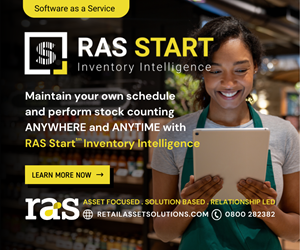STAFF SAFETY
Keeping an eye on safety during times of staff shortages
Naz Dossa, CEO of technology safety specialists, Peoplesafe, suggests ways in which managers can ensure their staff are safe at work as they cope with staff shortages.

Although cases are starting to slowly fall and the isolation period for people with COVID-19 in England has been reduced, the retail industry continues to be affected by significant staff shortages, leaving stores susceptible to theft and other damaging crimes.
For those who are able to work, their workload will be higher than usual as they cover for colleagues who are side-lined by the virus. Depleted staff levels could also result in employees unexpectedly working alone where they previously would have been supported.
Working alone: identifying and understanding the risks
It is not always as obvious as you might think to identify lone workers in a retail setting, but they will tend to find themselves in some - or perhaps all - of the following situations:
●Arriving in store before others to open up or start an early shift
●Staying behind to work late or lock up after hours
●Working separately from colleagues on the shop floor
●Travelling between stores
It is also important to look at the type of work and working environments that employees find themselves in such as; going into a stock room to retrieve goods, processing a delivery, being left alone to cover breaks, or living or working in an area with a high crime rate.
Analysing the immediate environment is essential to determining risk. Will employees be able to hear others clearly in an emergency situation? Will employees be able to see each other all of the time or is there a corner or display blocking the view?
How technology can help
2021 saw a huge rise in the verbal and physical abuse of retail staff as frustration over restrictions imposed during the pandemic rose to boiling point. Technology can provide assistance to people just doing their job when a situation escalates and in emergencies, as well as offering peace of mind for staff that help is available beyond their in-store colleagues.
We have heard many stories from customers about how the presence of a body worn camera can defuse a potentially violent or aggressive encounter. Enthusiasm for body worn video technology is rising in the retail sector because it can help to reduce costs by providing quality video and audio evidence in prosecutions of theft and staff abuse.
An equally effective, but less overt safety solution is a lone worker app or device. Unlike traditional fixed panic alarms, they are carried by the user, meaning that an alarm can be raised anywhere in the store.
Accredited to the British Standard for lone working (BS 8484), SOS alarms are raised to an Alarm Receiving Centre (ARC) which is staffed by highly trained, experienced Controllers and operates 24/7. Peoplesafe has URNs (Unique Reference Numbers) for all of the UK police constabularies allowing us to bypass 999 in an emergency and provide the quickest response possible to deliver the best outcome.
In light of the current circumstances, it is advisable to revisit risk assessments to identify and address any new hazards caused by staff shortages. Peoplesafe’s retail risk assessment template offers a starting point to improve employee safety.
For more information, set up a free consultation with our personal safety experts.






